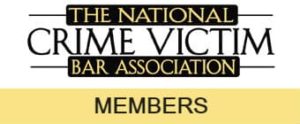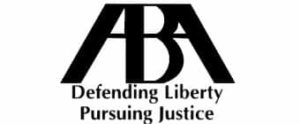
Hi - I'm Guy. I am an attorney that practices in PA, and NY. I am a former sex crimes prosecutor and my day-to-day cases are almost exclusively helping survivors of sexual abuse get justice. My team and I are ready to help.
The Catholic Church in Pennsylvania has hidden thousands of sexual abuse complaints from the public and law enforcement officials. That is the conclusion of a scathing grand jury report released on Tuesday, August 14, 2018 by Pennsylvania Attorney General Josh Shapiro.
Call our team today to speak with a Pennsylvania Catholic Church sexual abuse lawyer.
The result of an investigation spanning nearly 2 years, the report is an often-heartbreaking chronicle of horrific sexual abuse committed at the hands of over 300 Catholic priests from six of Pennsylvania’s dioceses: Allentown, Harrisburg, Pittsburgh, Erie, Greensburg and Scranton.
It is, without a doubt, the most sweeping investigation of Catholic sex abuse ever produced in the United States, coming on the heels of two previous grand jury reports that looked into sex abuse in the dioceses of Philadelphia and Altoona-Johnstown.
Over the course of around 18 months, the grand jury reviewed half-a-million documents, including thousands of pages until now concealed in the Church’s “secret archives.” According to Canon Law, the grand jury report says, each diocese was required to maintain a “secret archive” in which abuse complaints would be held. “Only the bishop can have the key,” the report continues.
Read More: Harrisburg, PA Diocese Releases List Of 71 Priests Accused Of Child Sexual Abuse
Opening the secret archive, the grand jury found countless credible reports of sexual abuse alleged against Catholic priests. Over 1,000 victims have been identified from the documents, spanning back to the 1940s.
The number of priests implicated in these reports has risen to 301 and, while some of their names have been redacted due to pending litigations against them, most of the priests are named in the report. Some are dead, some still living.
The grand jury report is difficult reading. The stories are shocking, often disgusting. A priest kept urine, pubic hair and menstrual blood samples from his young female victims, five sisters from the same family. Children were groomed through continual physical contact, then “marked” with special gold cross necklaces as have been made accustomed to an older man’s touch.
And over and over, priests who were accused of – or admitted to – abusing young children were allowed to remain in the ministry. Some were shuttled from diocese to diocese, their crimes are hidden in private Church documents behind euphemisms such as “boundary issues” and “inappropriate contact,” their stories never referred to the police.
No diocese stands apart as a beacon of integrity. As the grand jury found after nearly 2 years of investigation, each of the 6 dioceses employed a veritable “playbook for concealing the truth.” The pattern, or strategy, of concealment, was so clear that the grand jury engaged members of the FBI’s National Center for the Analysis of Violent Crime to conduct a behavioral analysis.
“First, make sure to use euphemisms rather than real words to describe the sexual assaults in diocese documents. Never say ‘rape’; say ‘inappropriate contact’ or ‘boundary issues.’
Second, don’t conduct genuine investigations with properly trained personnel. Instead, assign fellow clergy members to ask inadequate questions and then make credibility determinations about the colleagues with whom they live and work.
Third, for an appearance of integrity, send priests for ‘evaluation’ at church-run psychiatric treatment centers. Allow these experts to ‘diagnose’ whether the priest was a pedophile, based largely on the priest’s ‘self-reports,’ and regardless of whether the priest had actually engaged in sexual contact with a child.
Fourth, when a priest does have to be removed, don’t say why. Tell his parishioners that he is on ‘sick leave,’ or suffering from ‘nervous exhaustion.’ Or say nothing at all.
Fifth, even if a priest is raping children, keep providing him housing and living expenses, although he may be using these resources to facilitate more sexual assaults.
Sixth, if a predator’s conduct becomes known to the community, don’t remove him from the priesthood to ensure that no more children will be victimized. Instead, transfer him to a new location where no one will know he is a child abuser.
Finally and above all, don’t tell the police. Child sexual abuse, even short of actual penetration, is and has for all relevant times been a crime. But don’t treat it that way; handle it like a personnel matter, ‘in house.’ “
As the report proceeds to document 2 cases from each diocese in excruciating detail, this strategy for concealment can be seen playing itself again and again. It is truly amazing the lengths to which the Church went to protect dangerous sexual predators, men of the cloth who had utterly violated their duty to care, instead of protecting children.
As Attorney General Josh Shapiro said at a press conference announcing the report on Tuesday, “predators in every diocese weaponized the Catholic faith and used it as a tool of their abuse.”
Then, quoting the grand jury report, he continued, “Priests were raping little boys and girls and the men of God who were responsible for them not only did nothing, they hid it all. For decades.”
Unfortunately, the grand jury report is unlikely to lead to any criminal charges.
Most of the abuse chronicled is far too old for that; cases would be barred by Pennsylvania’s statute of limitations, which allows victims of childhood sexual abuse until their 50th birthday to press charges. The statute of limitations for PA sex abuse lawsuits is even shorter, ending on a victim’s 30th birthday. In a section on potential reforms, the grand jury report calls for these laws to be thrown out.
Attorney General Josh Shapiro supports a similar reform, along with the opening of a temporary “window” that would allow victims identified in the report a grace period in which to pursue claims against individual abusers and the Catholic Church.
The grand jury found, in document after document, that Church leaders resisted the idea of mandatory reporting. “We saw from diocesan records that church officials, going back decades, were insisting they had no duty to the report to the government when they learned of child abuse in their parishes,” the report reads.
Today’s mandatory reporting law is better, the grand jury says, but it still leaves too much room for interpretation. As currently written, Pennsylvania’s mandatory reporting law makes it a crime to “continually” fail to report, but only when the abuse of “the child” is “active.” What, in this context, does “active” mean, the grand jury asks. “Make it clear that the duty to report a child abuser continues as long as there’s reason to believe he will do it again,” the grand jury concludes.


